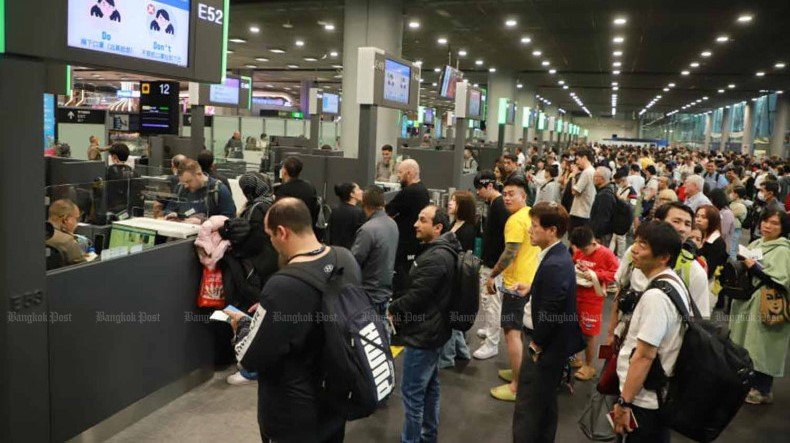
ECONOMYNEXT – The objective of Sri Lanka’s monetary policy is not to promote growth but provide stability to achieve its growth potential, Central Bank Governor Nandalal Weerasinghe said though it could be a secondary aim.
Stability
“The objective of monetary policy is not to promote growth, but to stabilize and facilitate for the country to achieve potential growth, whatever the levels,” Governor Weerasinghe told reporters in Colombo, after keeping rates unchanged.
“A lot of other policies will have to take place to enhance growth in the medium to long term.”
Critics have complained that Sri Lanka’s central bank has in the past tried to push growth by cutting rates by printing money through liquidity tools and denied monetary stability to the people and businesses by trying to close a potential ‘output gap’.
Sri Lanka has exchange controls due to successive deeply flawed monetary operational frameworks which intensify and also leads to trade controls, whenever attempts are made to boost growth by inflationary rate cuts involving reverse repo injections or standing facilities.
In the last century there has been a growing belief under Keynesian or post-Keynesian doctrines that rate cuts could boost growth or unemployment, (the non-neutrality of money) leading to the eventual collapse of the Bretton Woods, the emergence of floating rates, high levels of inflation, asset price bubbles like the housing bubble in floating regimes and steep depreciation and default in reserve collecting ones.
Some critics say money is indeed ‘non-neutral’ in that monetary instability, negative confidence shocks and the inability to conduct normal economic activities that come from forex shortages or defaults in the wake of inflationary rate cuts, leads to below average growth or economic contractions. Others – including monetarists – believe money may not be neutral in the short-term.
Before open market operations proper, were devised in the 1990s, leading to deliberate inflationary rate cuts, forex shortages seem to have come from rural credit re-finance, deficit financing as well as sudden sterilization of forex market interventions in Sri Lanka.
Sri Lanka’s economy grew 4.5 percent in the last quarter, after negative growth from the most aggressive ‘macro-economic policies’ deployed since the setting up of the central bank in 1950 and joining the International Monetary Fund.
For 2024, the central bank is making a cautious projection of around 3.0 percent, amid domestic elections, a debt restructure that is yet to be completed and an uncertain external environment.
Output Gap
At the moment there is a potential output gap based on the central bank’s model, Governor Weerasinghe said.
The potential output is a statistical estimation which is based in part on historical trends.
“Potential output is not a fixed one,” Governor Weerasinghe explained. “It is a dynamic variable, depending on historical data. As everyone knows potential output is what has happened in the
past and that will generate the potential output.”
“On that basis what we are seeing is the potential output is higher than what we think now.
He declined to publicly share the output gap estimated by the central bank. The potential output has been as high as 5.25 percent when it begun to be estimated.
“I don’t think we can share that kind of information in the model,” Governor Weerasinghe said. “That’s a complicated one. What we see is there is still a gap, a negative output gap is there.
“The central bank’s objectives in monetary policy decisions; the first one is to look at the inflation outlook, and then at whether there is a slack in the economy or whether there is a space for the economy to catch up and reach the potential.”
Rates
The central bank has been cautious in cutting rates, and held the policy corridor at 8.5 percent and 9.50 percent this, maintaining a balance of payments surplus, a strong exchange rate, allowing the agency to maintain monetary stability.
The central bank has maintained low inflation of around 2.5 percent for around 18 months, providing stability for economic activities to normalize.
At the moment so-called statistical ‘real’ short term rates based on historical inflation are positive.
Inflation would continue to be below 5 percent for 2024 based on their statistical model, Director of Economic Research S Jegajeevan said, though there may be a pick up from current levels.
Inflation may edge higher in the latter part of 2025.
“I can see there is a space (to cut rates),” Governor Weerasinghe said. “Inflation we think we can maintain at 5.0 percent. Policy rates are at 8.5 percent. I think real natural rates can be much lower going forward.”
At the moment with excess liquidity from dollar purchases interbank rates have hit the bottom of the policy corridor of 8.5 percent preventing short term rates from falling.
Recent lowering of the policy corridor, have also not been enforced by any printing of money.
The willingness to invest savings longer term, may depend not only on the availability of real savings but how confident savers are about future stability of the country including the exchange rate, analysts say. (Colombo/May31/2024)
